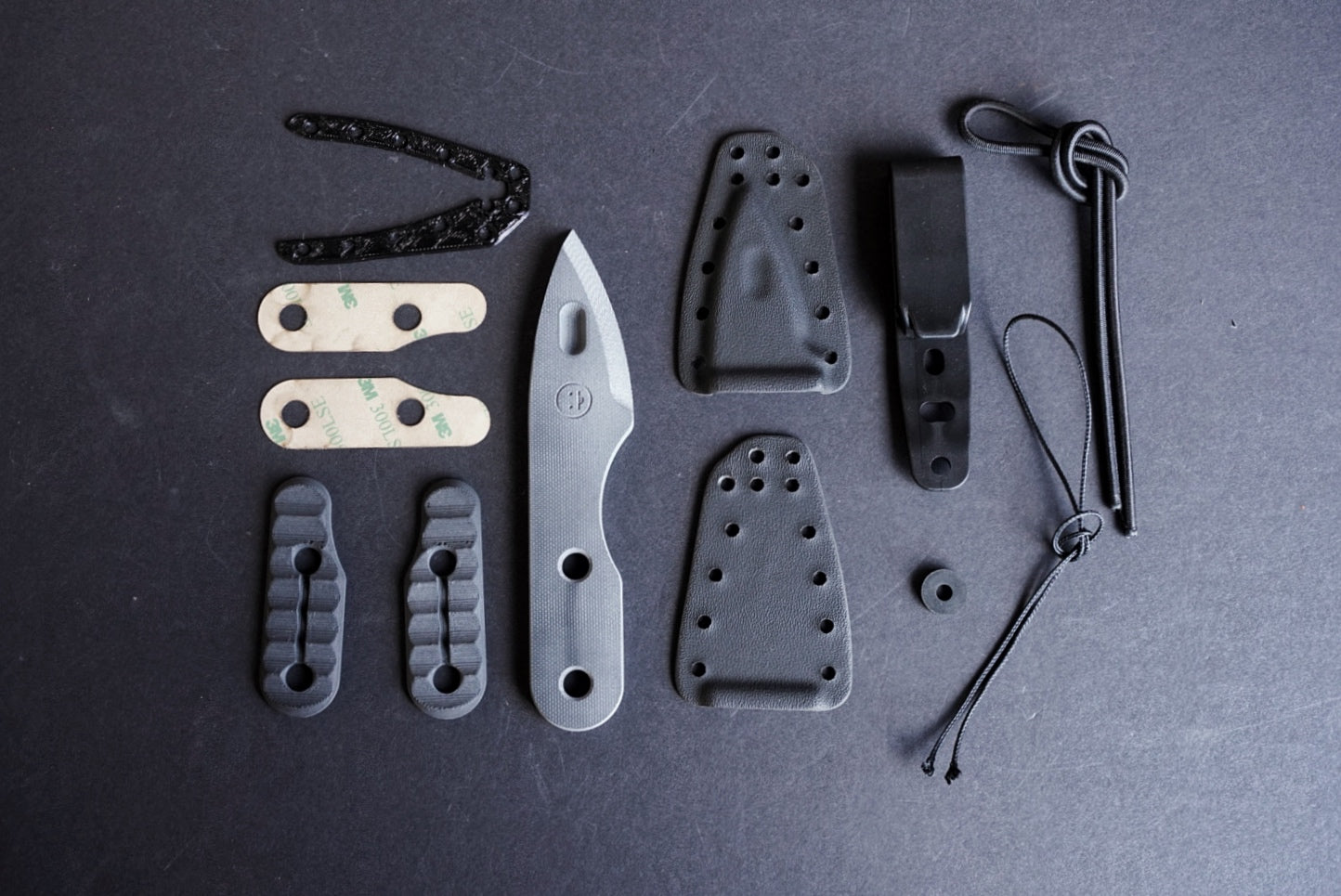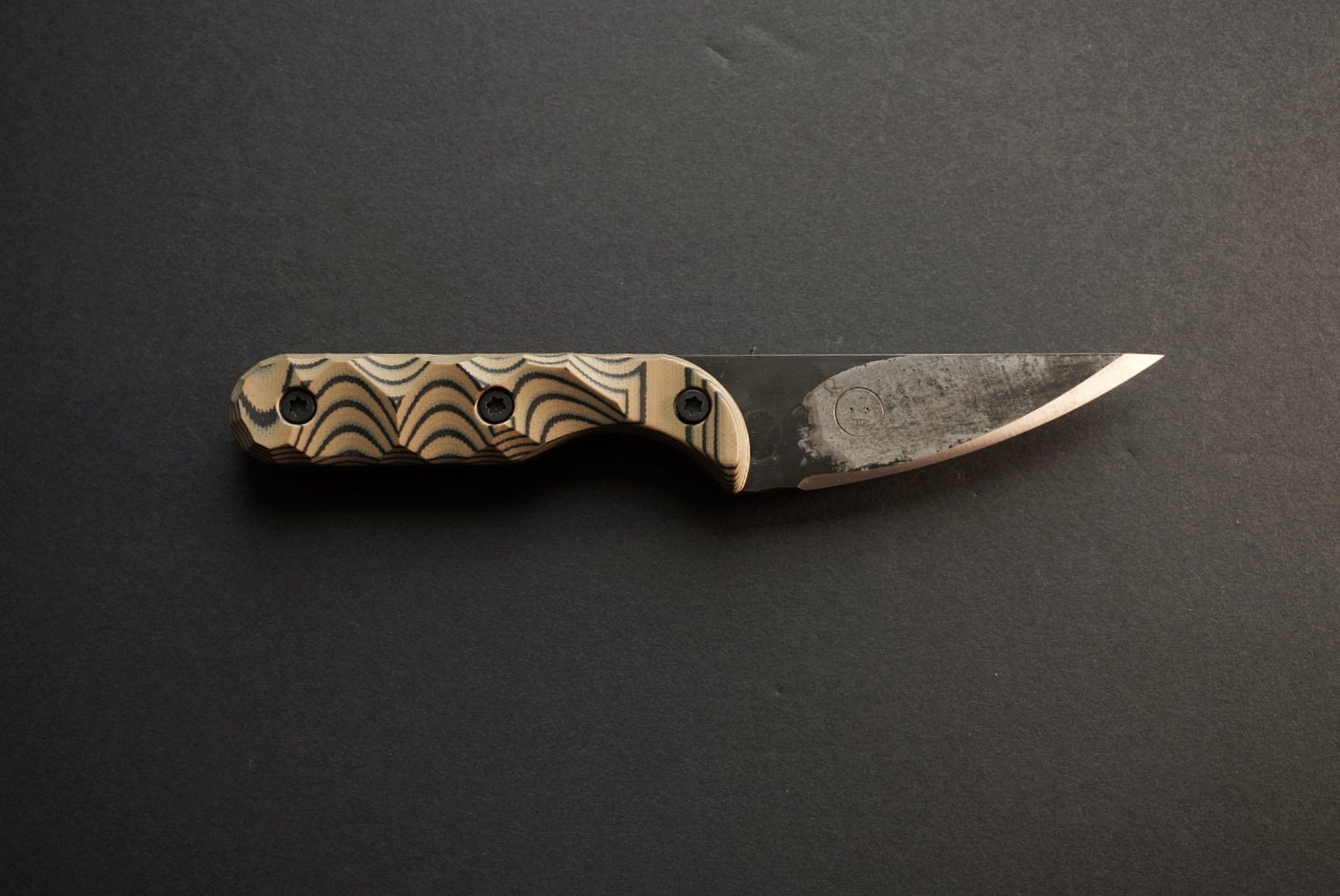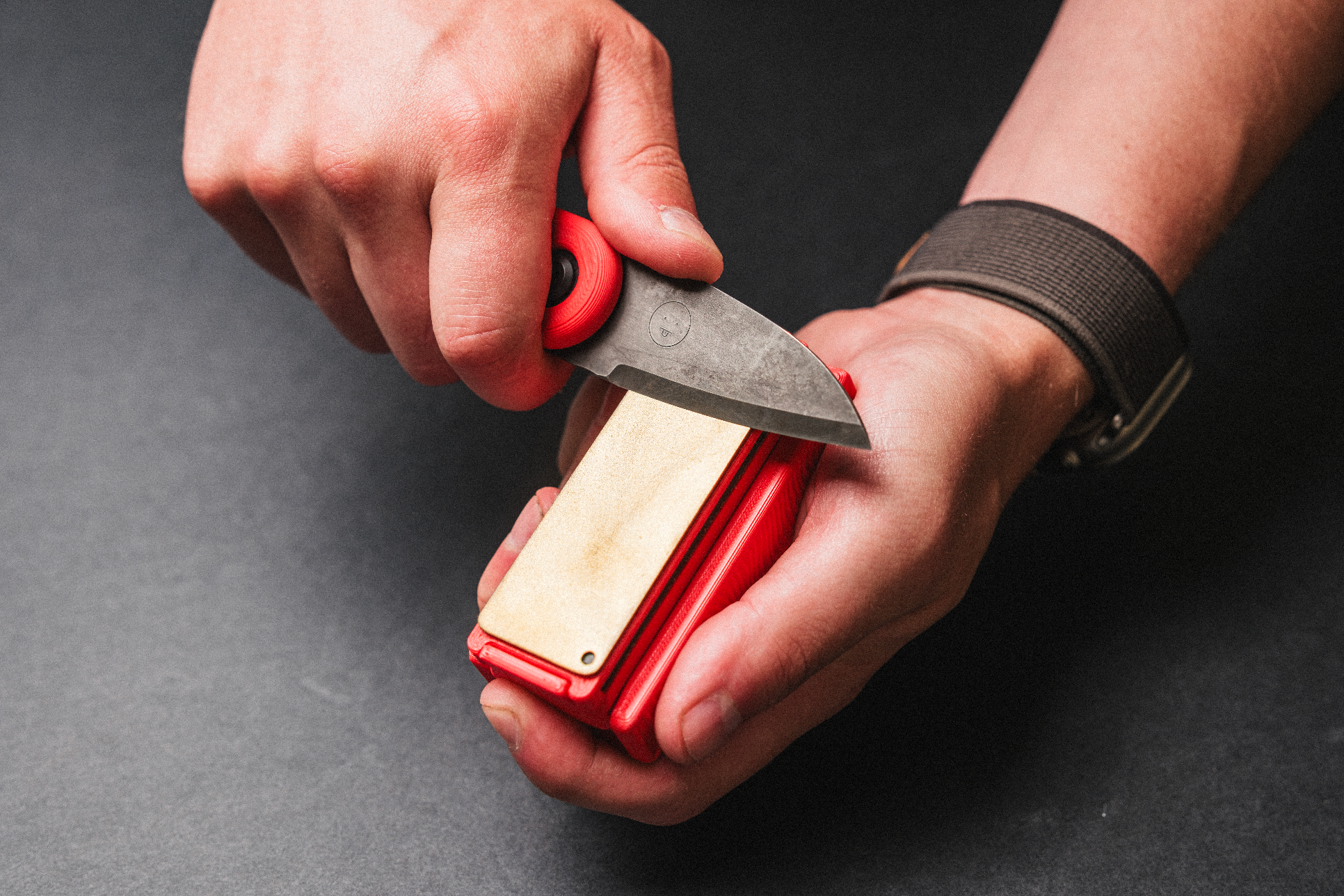XL BEEKEEPER
Sometimes you need a big knife, sometimes you just want a big knife.

The XL beekeeper was an idea I wanted to try for the hell of it but has turned into a handy hard use addition to the beekeeper lineup. There are many labels for different types of knives; survival, bushcraft, tactical, fighting… I avoid thinking of knives in these terms when I am designing something new. Instead, I try and focus on a primary task or general philosophy. The beekeeper was born out of simplicity and the XL beekeeper was made for batoning. I wanted to make a tweak the beekeeper dimensions to create a batoning beast. I started with the blade length then worked backwards from there.

This knife may seem excessive at first glance but has proven to be very capable and enjoyable to use. This knife has a 6.75” blade and a long handle. Made from 3/16” 52100 with a full flat grind (and signature reinforced tip) giving this knife fantastic balance that makes it feel lighter than it really is. This is a knife designed to baton wood. The thin edge and thick spine creates a wedge that sinks into wood easily and separates it quickly. The additional handle length gives you plenty of room to strike on the handle side.

Maintaining full thickness of the material, like all the other beekeepers, adds rigidity, increases toughness and allows a larger strike area so you don’t chop the stick you are hitting the knife with inadvertently.

*** One thing to note is that batoning is tough on a knife, minimizing the abuse your knife takes is important. Keep your knife perpendicular to the wood you are splitting, avoid knots and hardwood when softwood is available and use multiple lighter taps instead of heavy swings to minimize vibrations. It is always easier to split wood with the grain and I have found taking smaller chunks off of the edges of larger pieces minimizes the stress on the blade and achieve the same result in the end.

In my testing I have intentionally put this knife through tough situations, splitting the biggest logs perpendicular to their grain, intentionally hitting knots and swinging the baton hard. Just because the knife has survived these tests does not mean it will continue to forever. I will continue to test in this manner, but I recommend avoiding these practices to ensure your tool stays in one piece. Just because you can, doesn’t mean you should.





Leave a comment
This site is protected by hCaptcha and the hCaptcha Privacy Policy and Terms of Service apply.